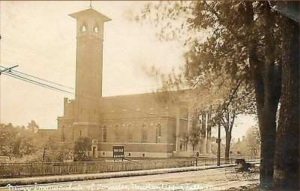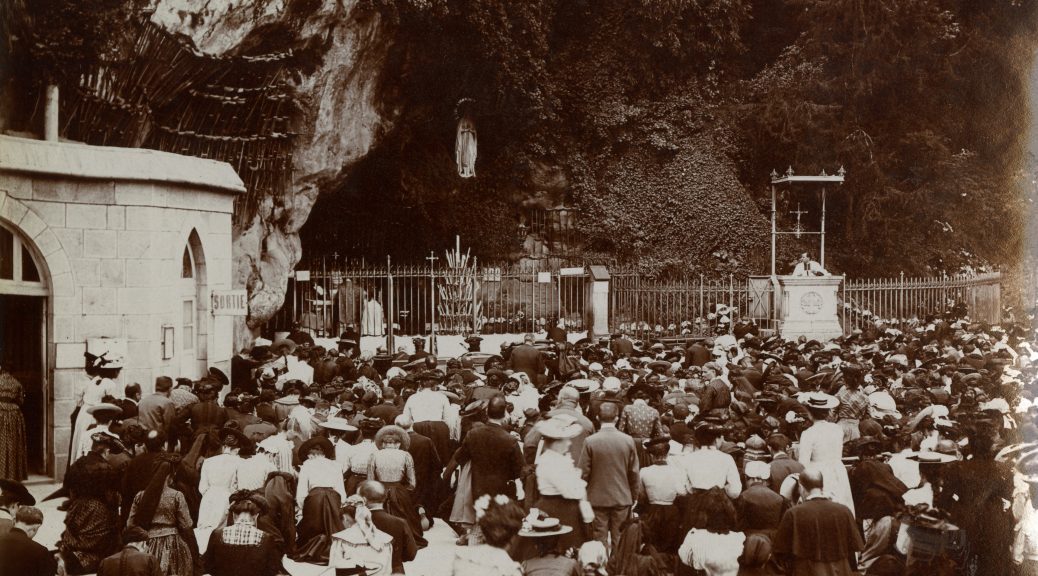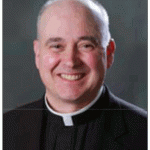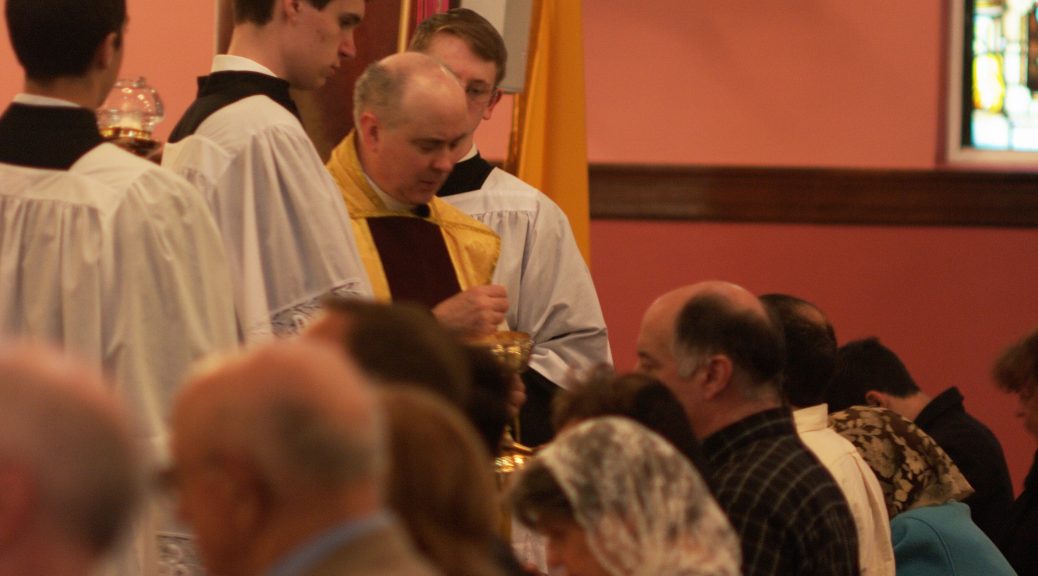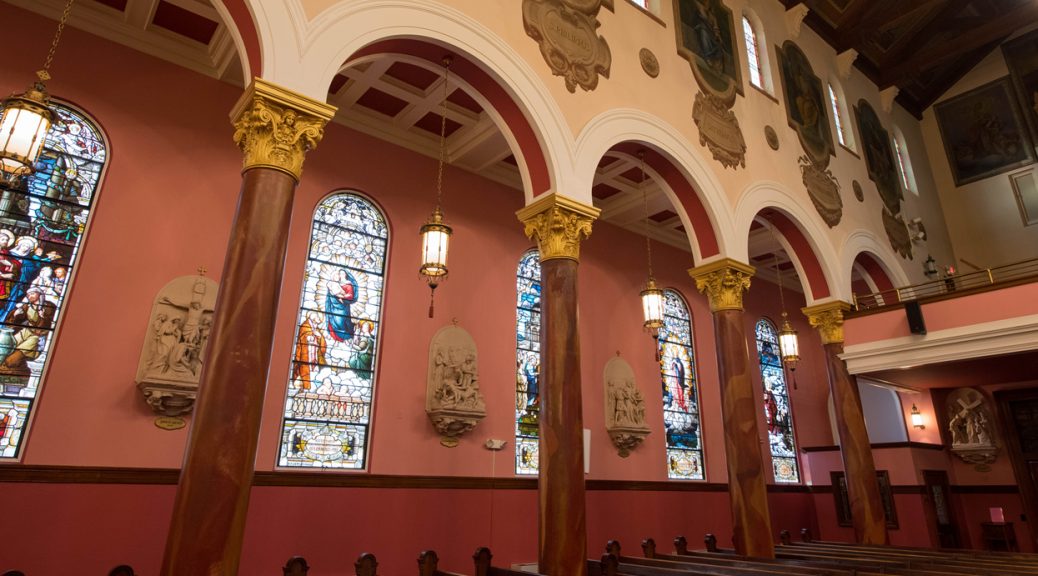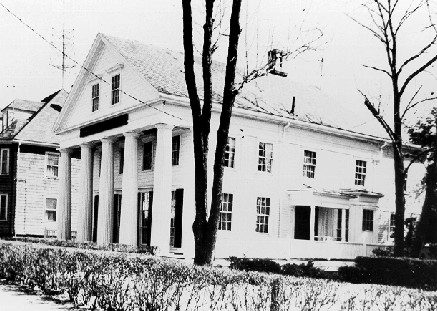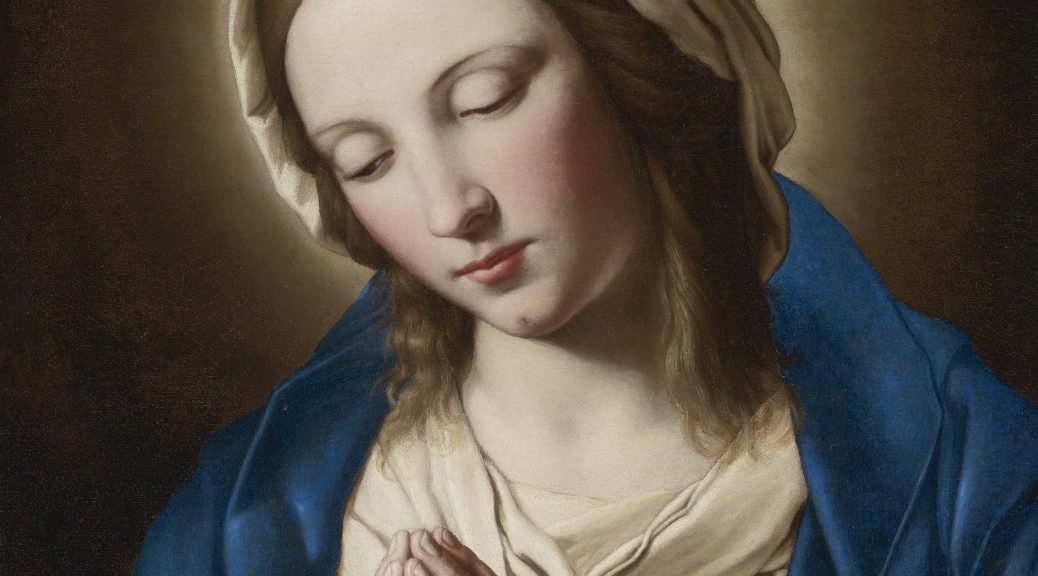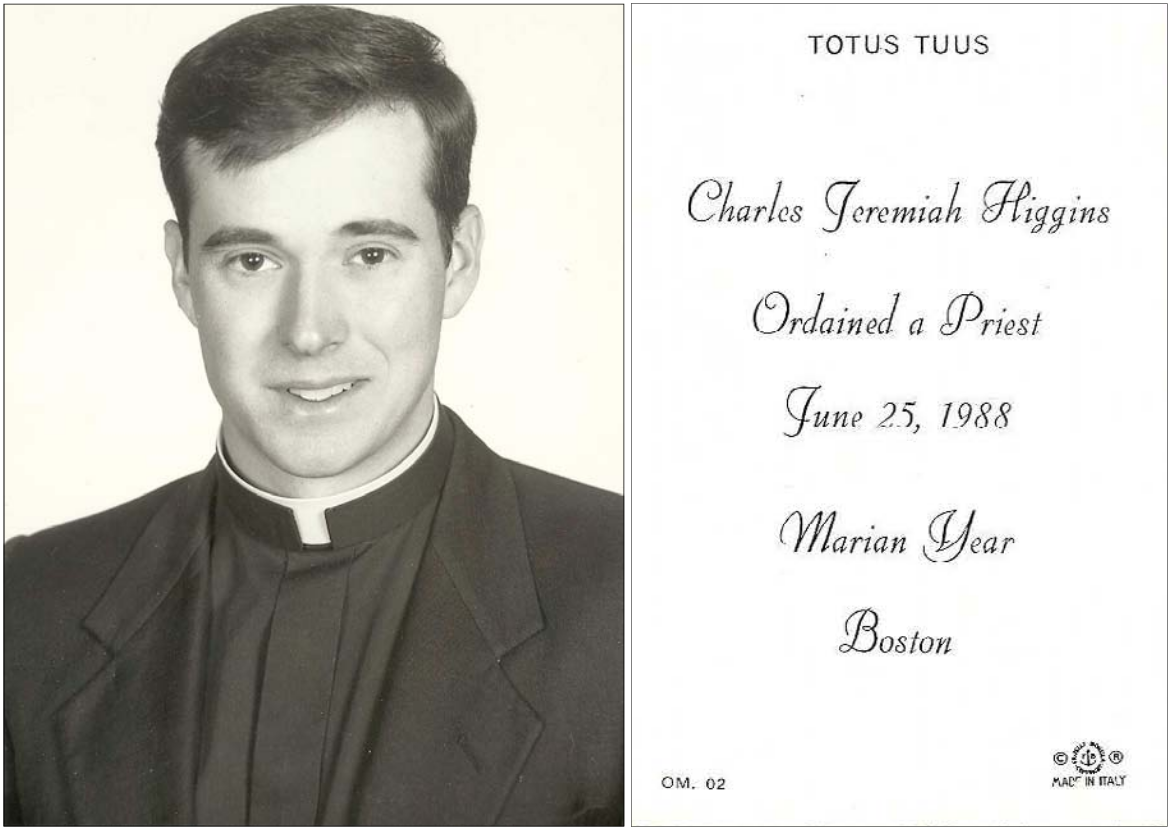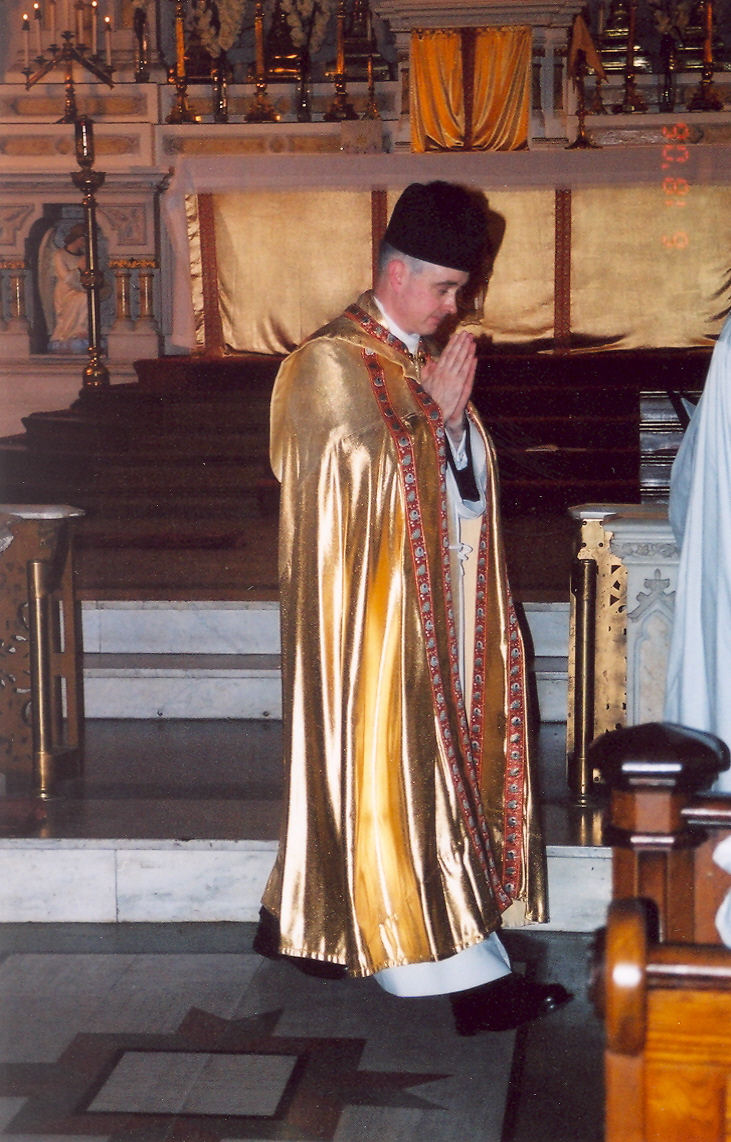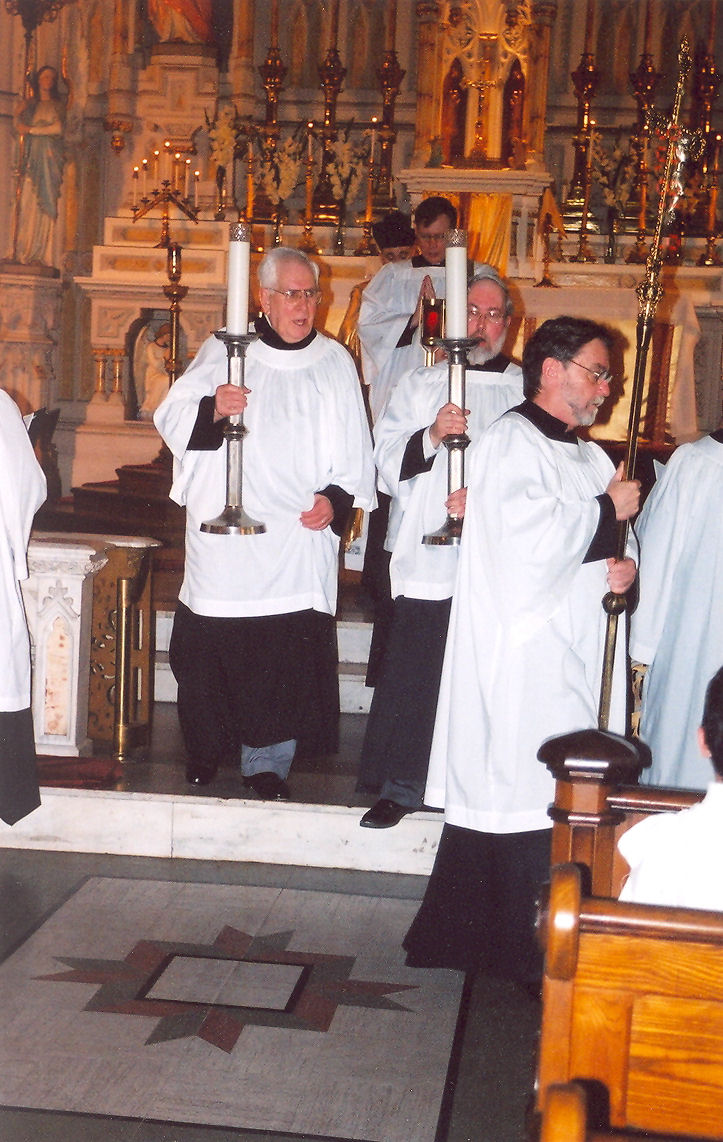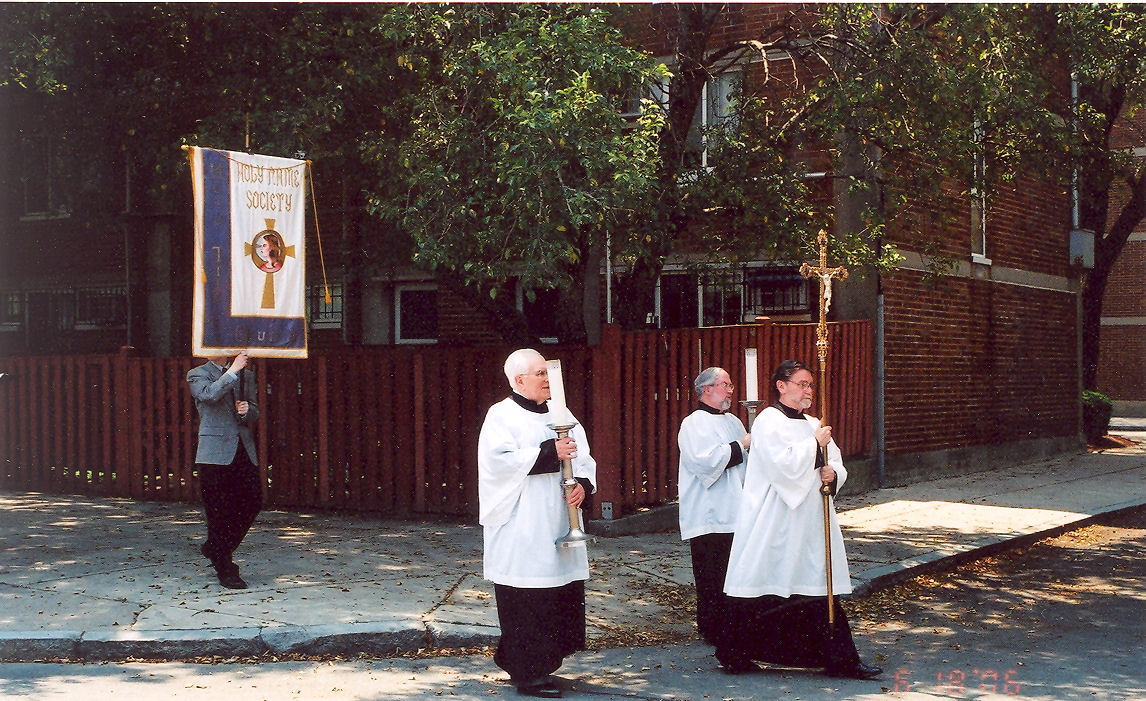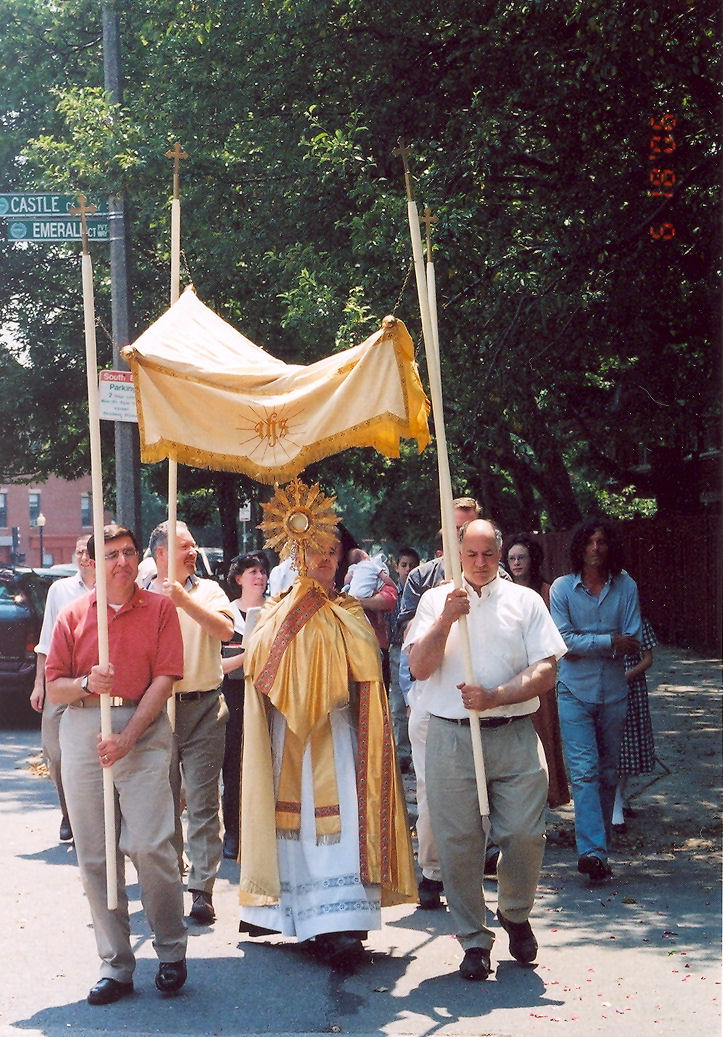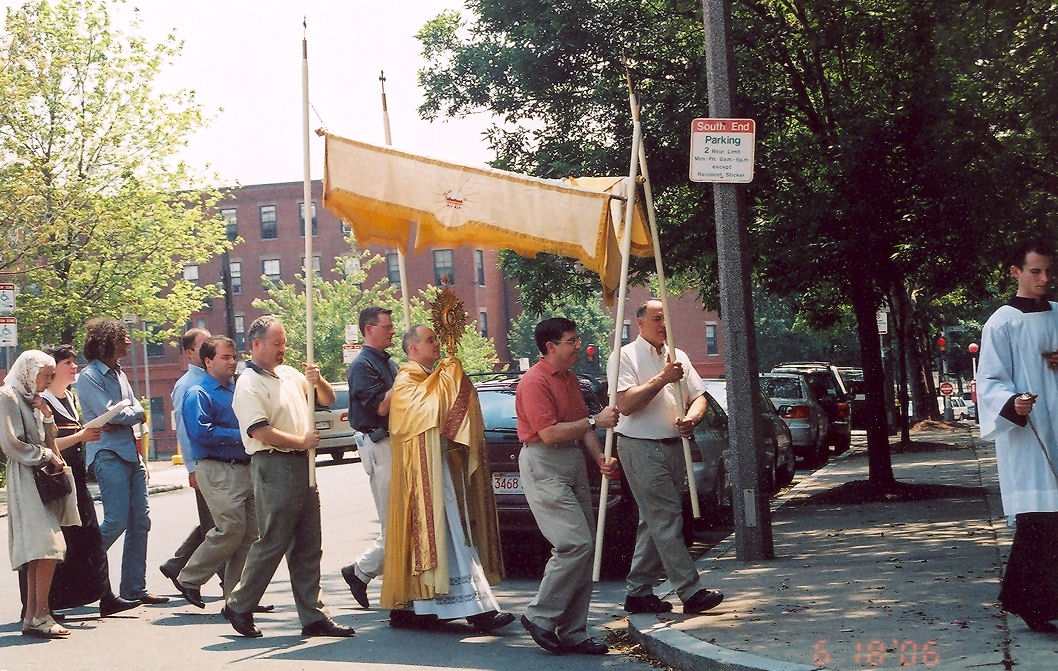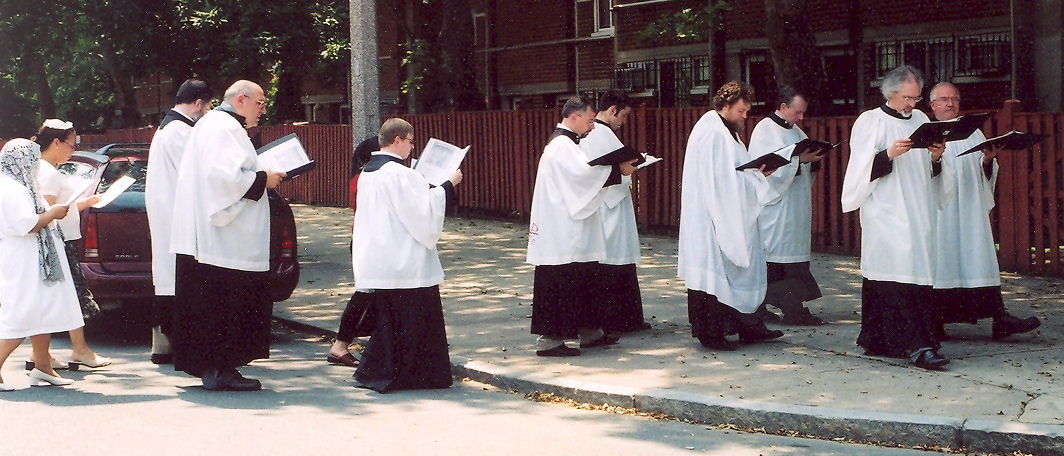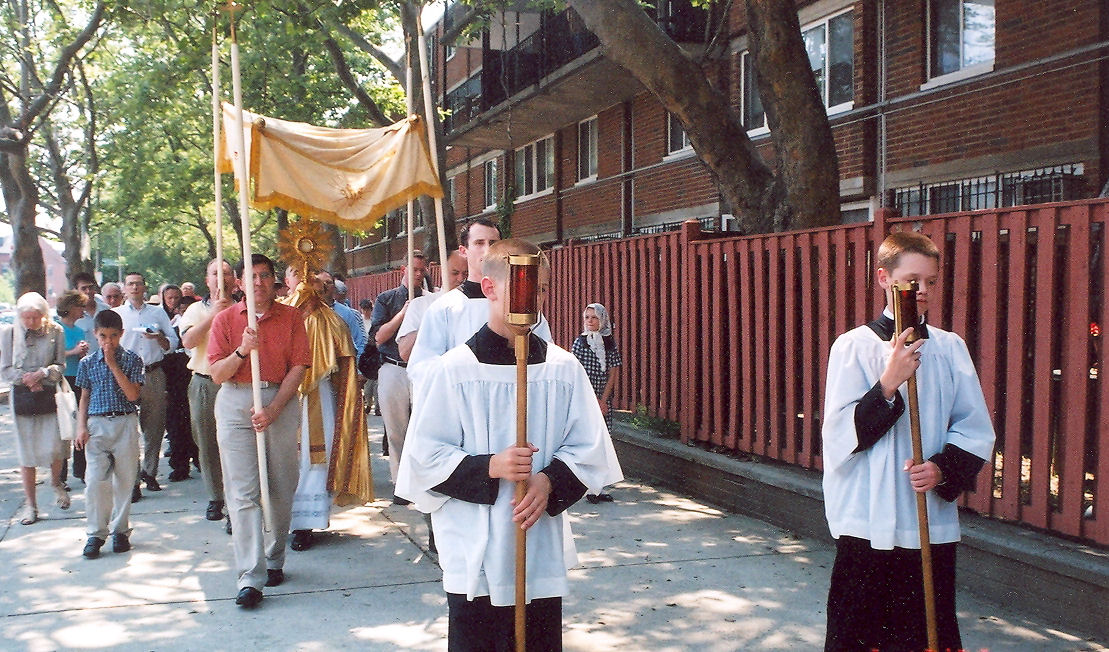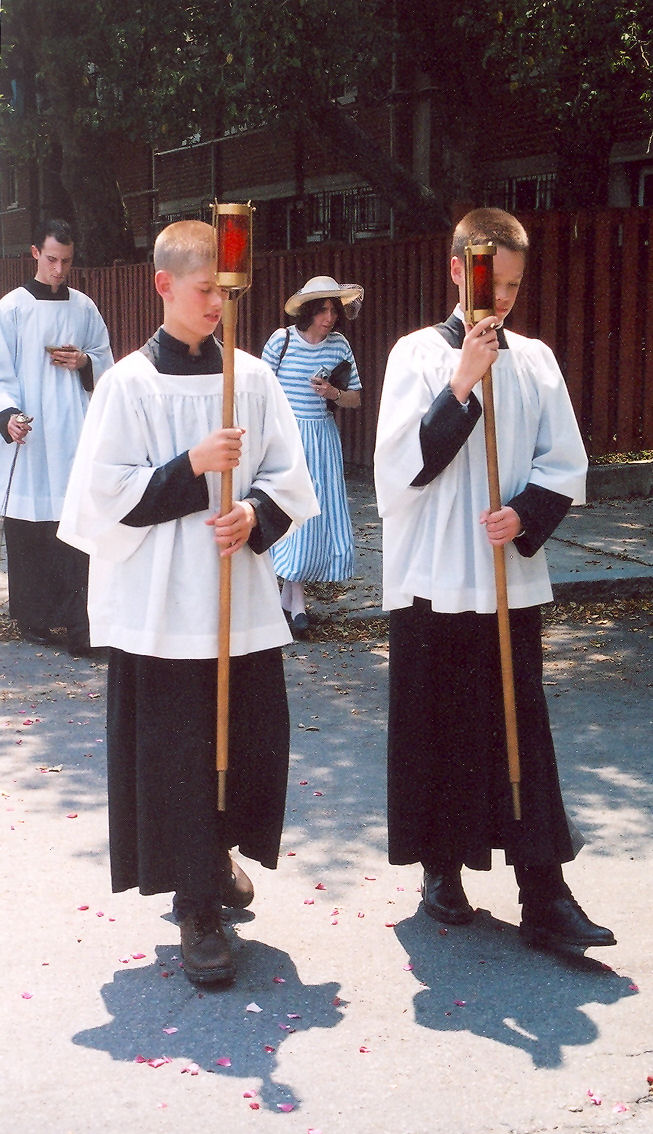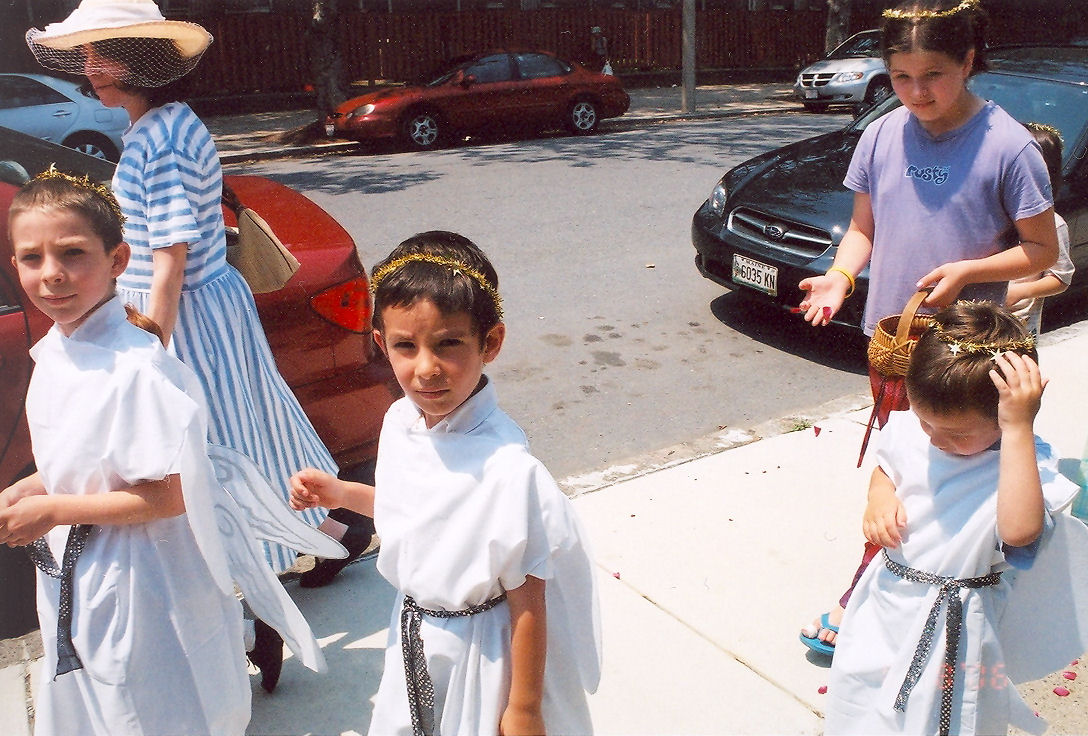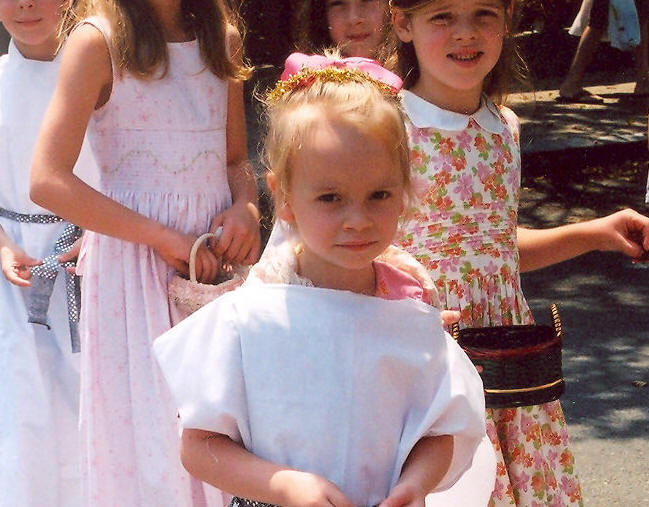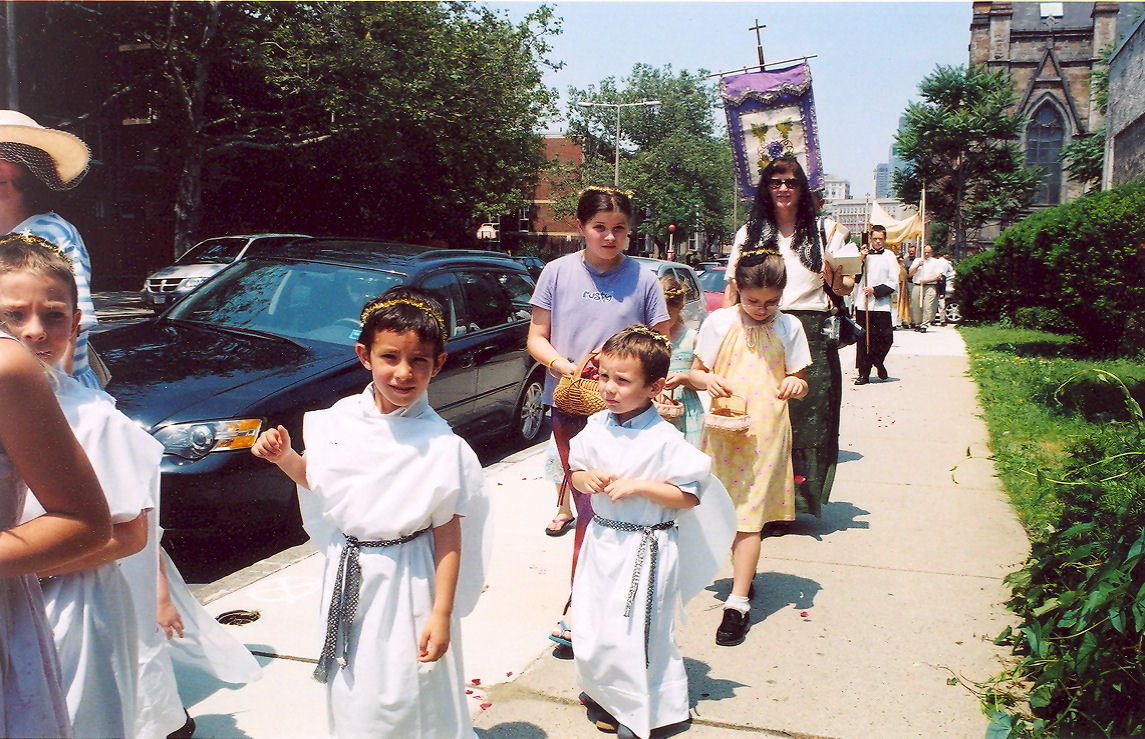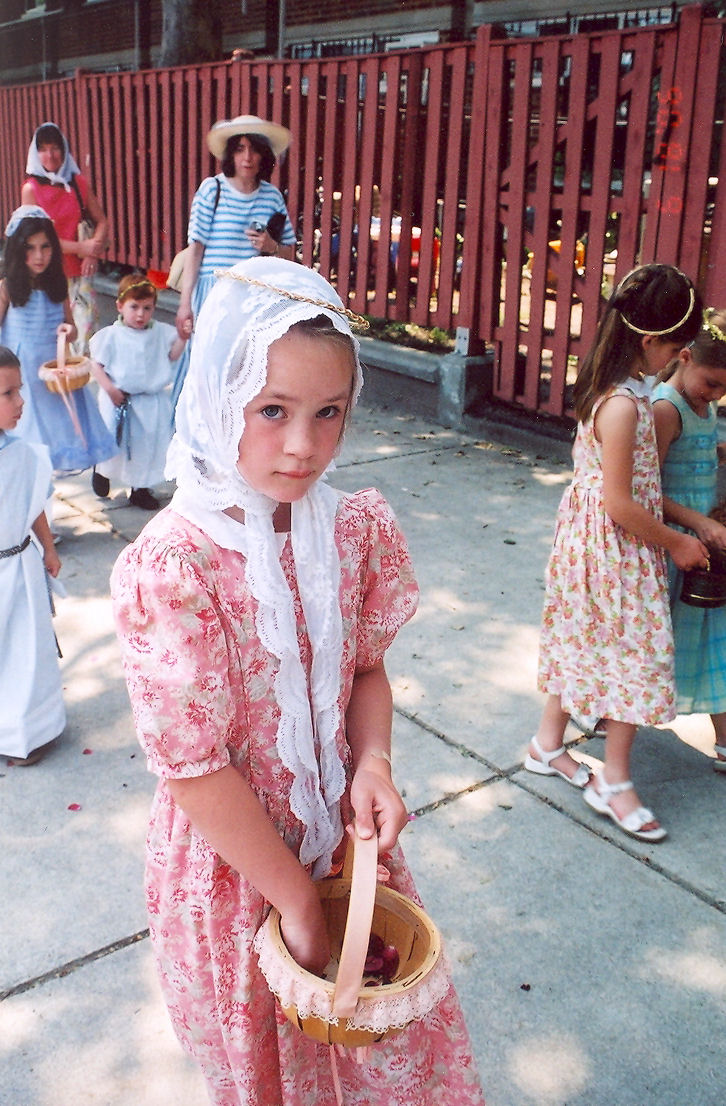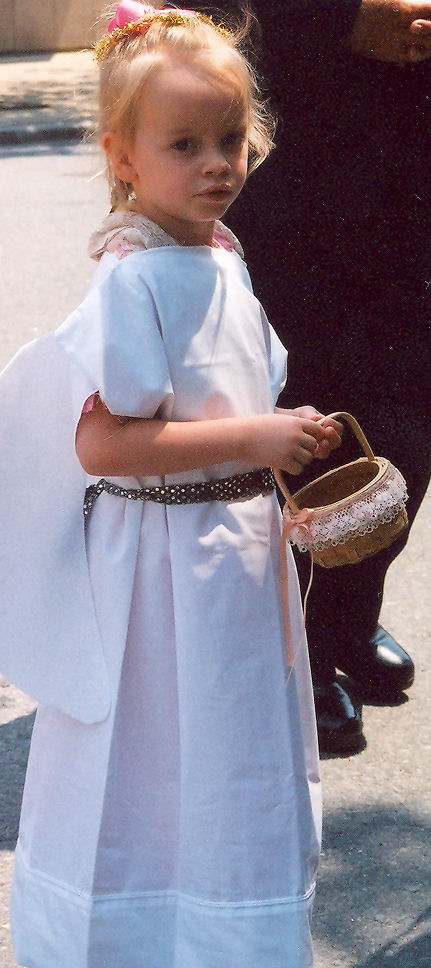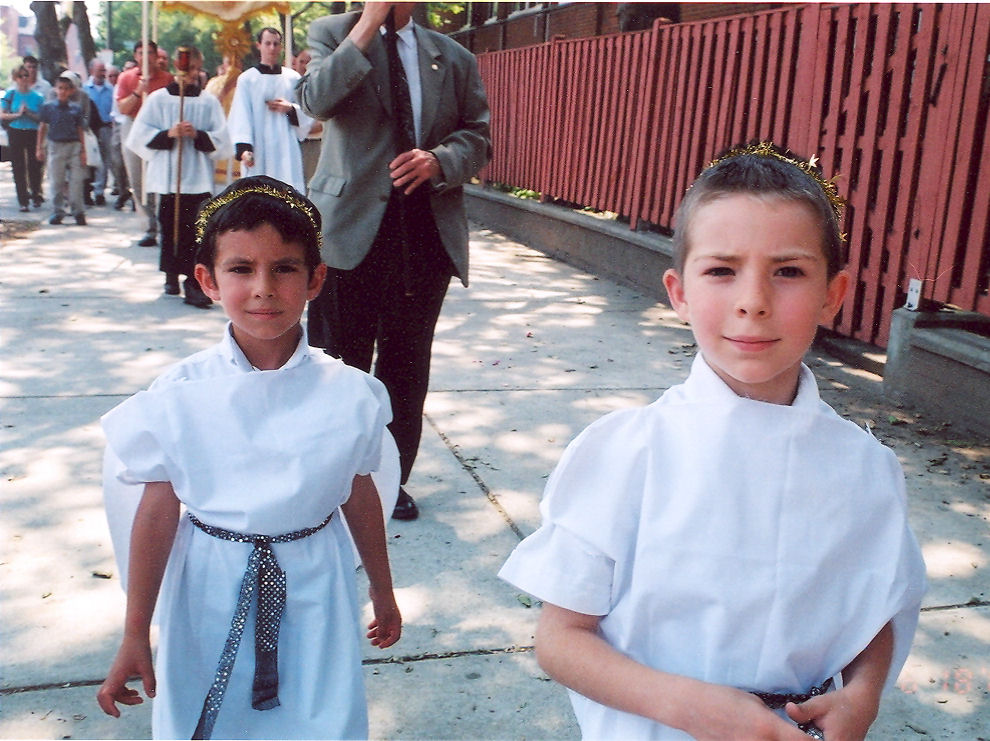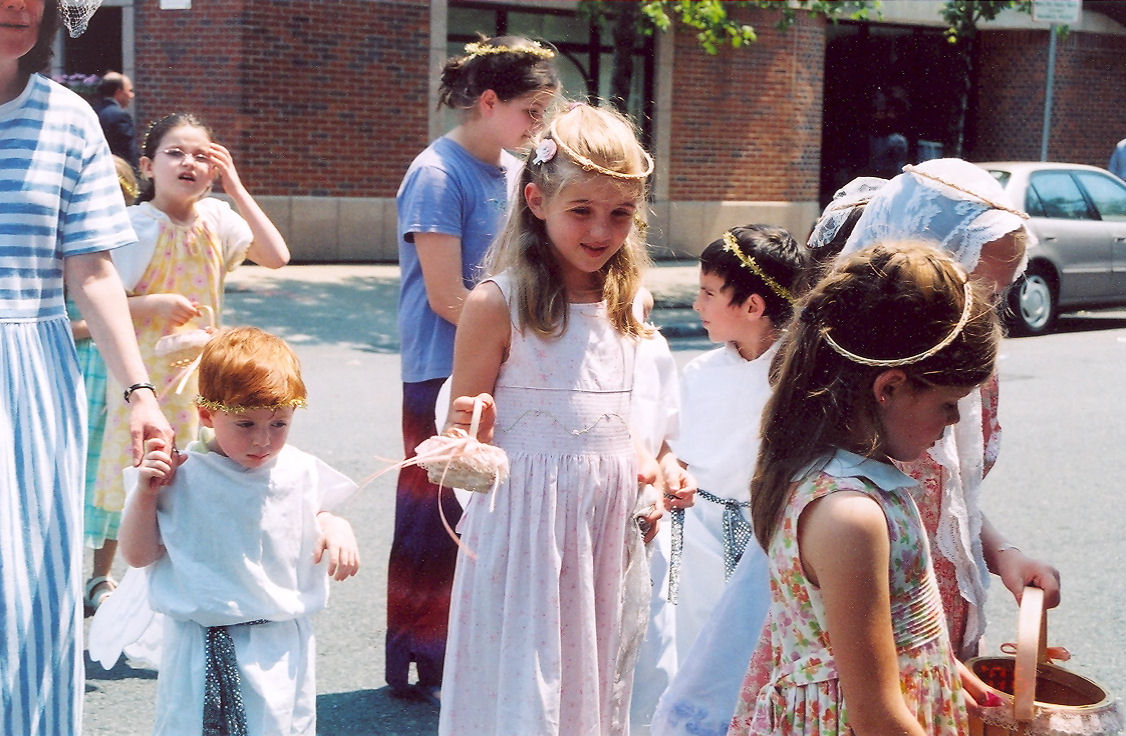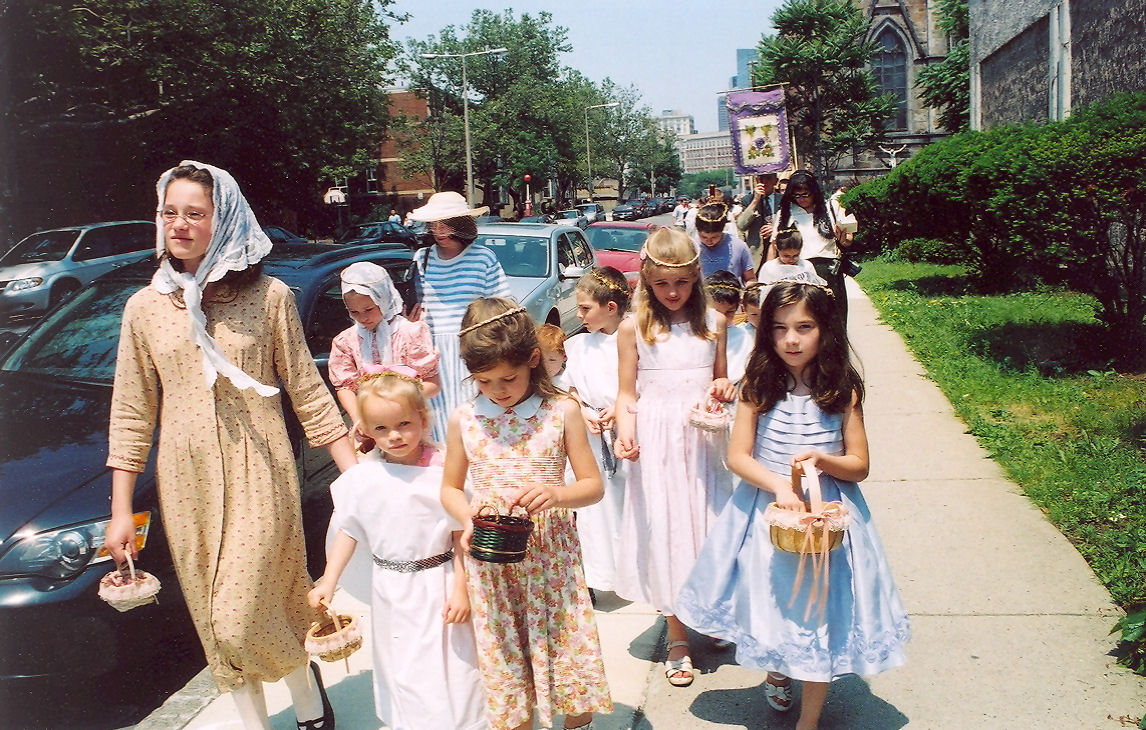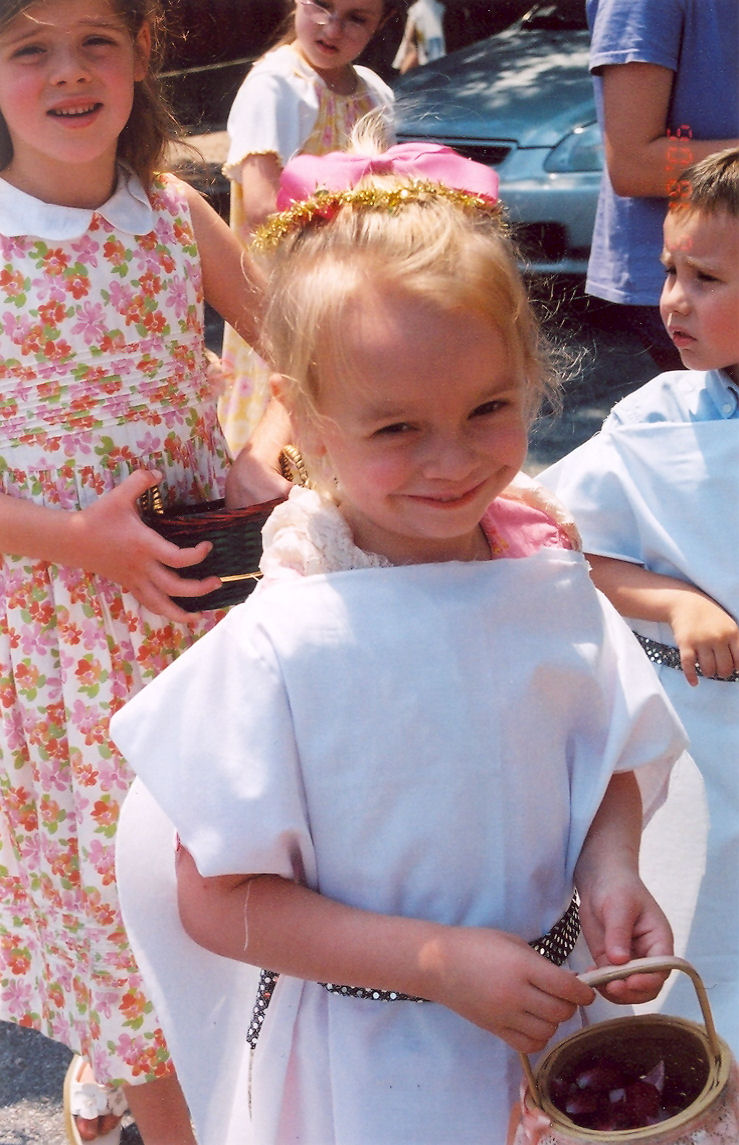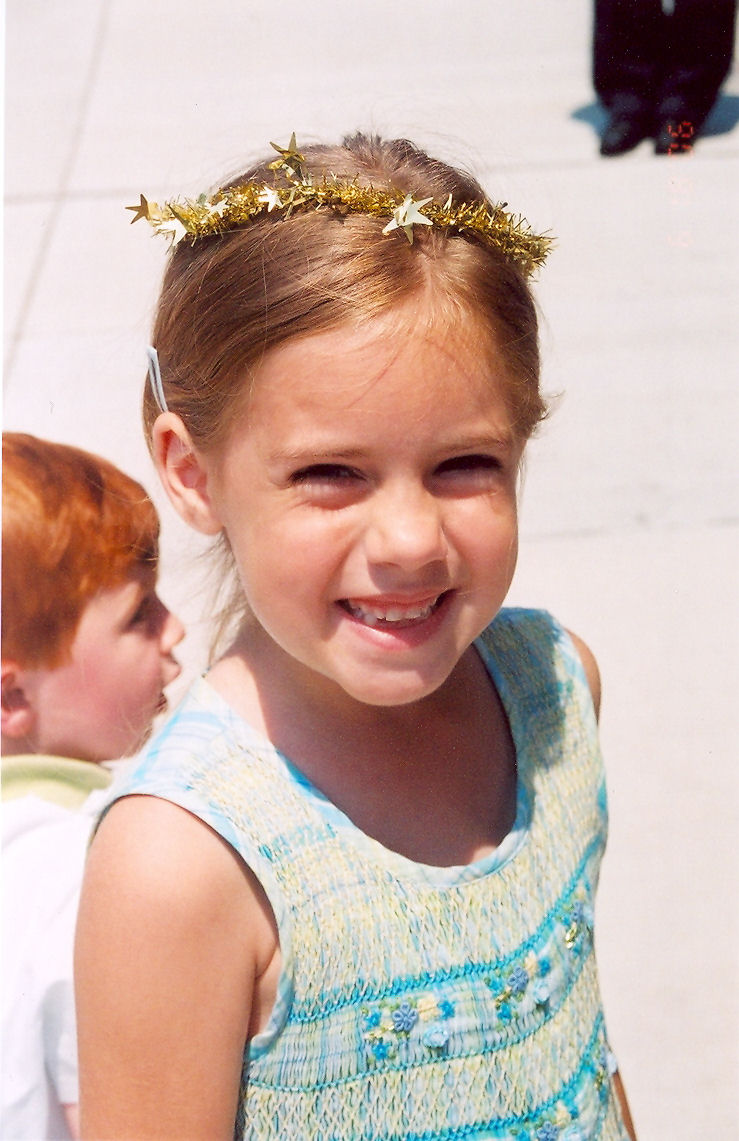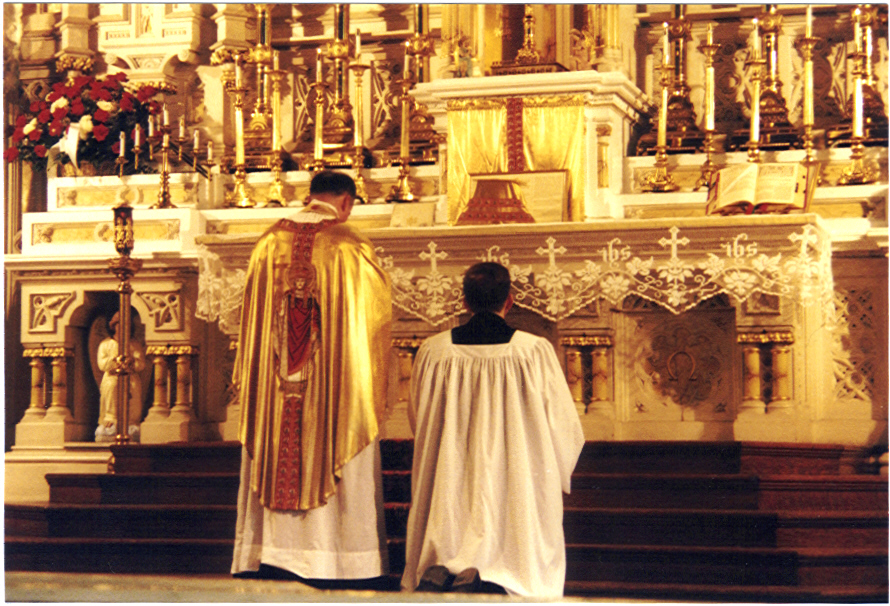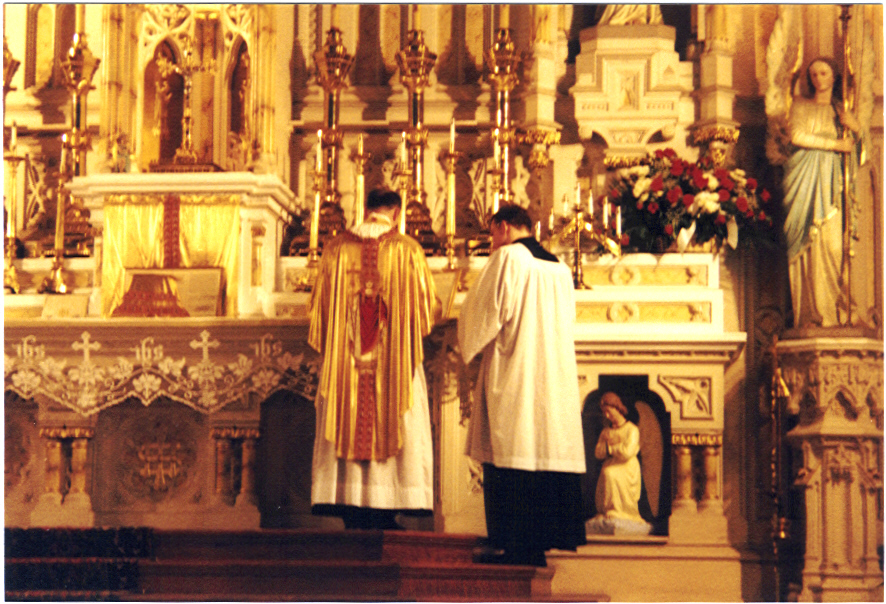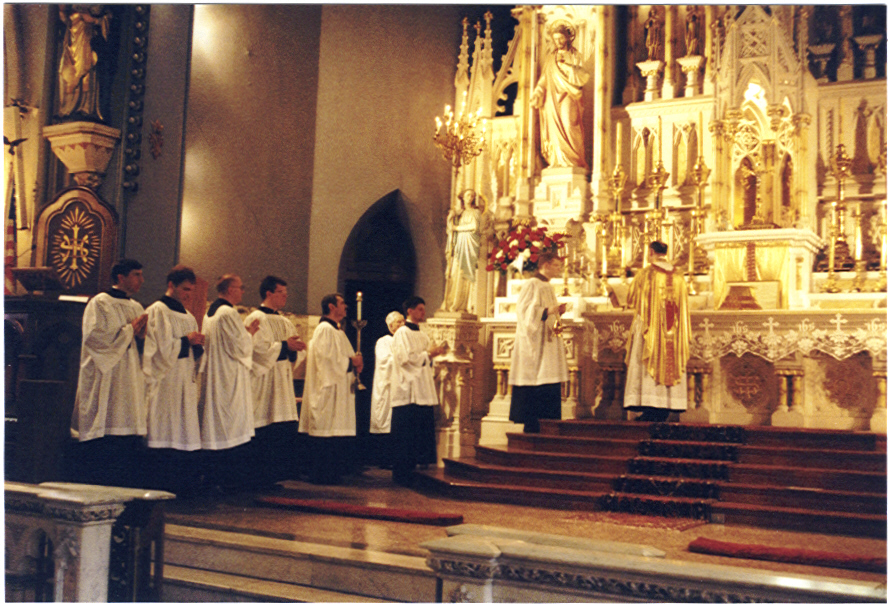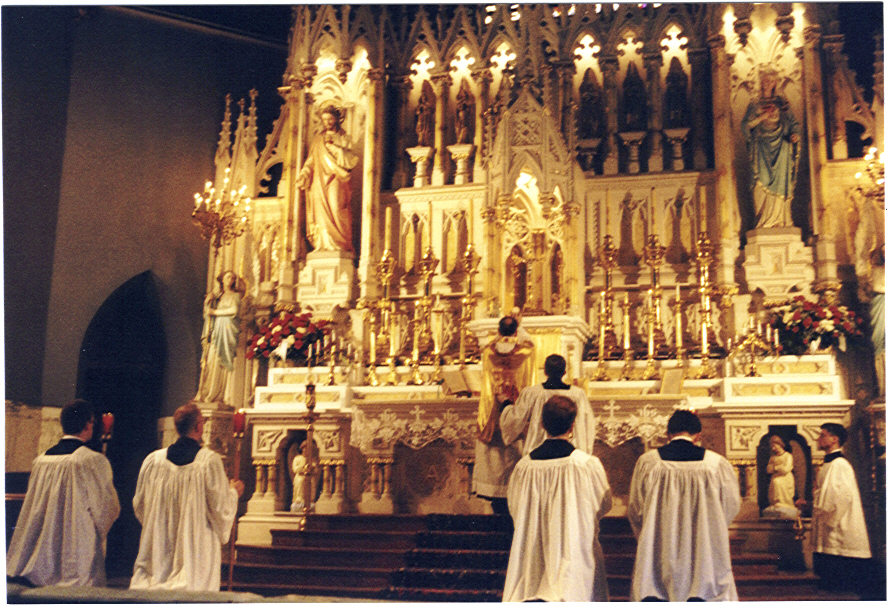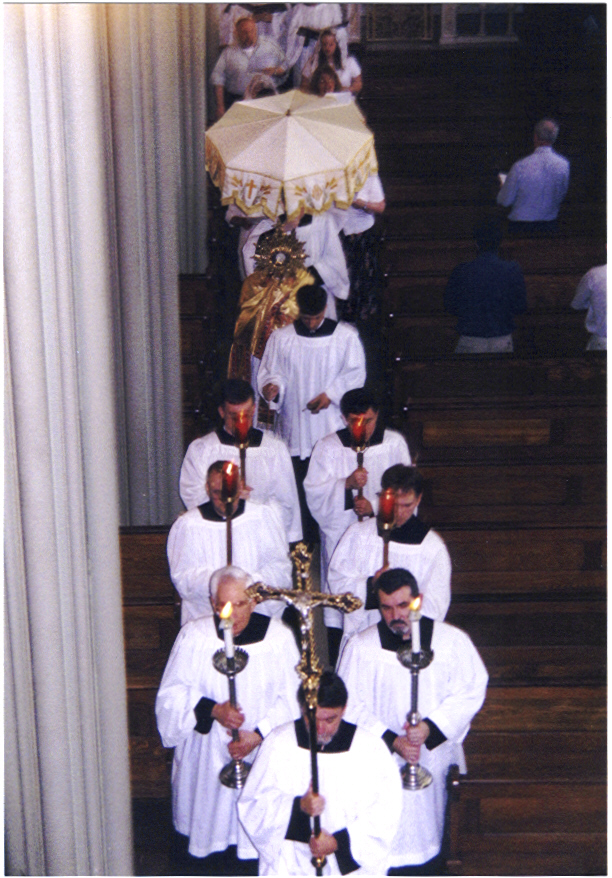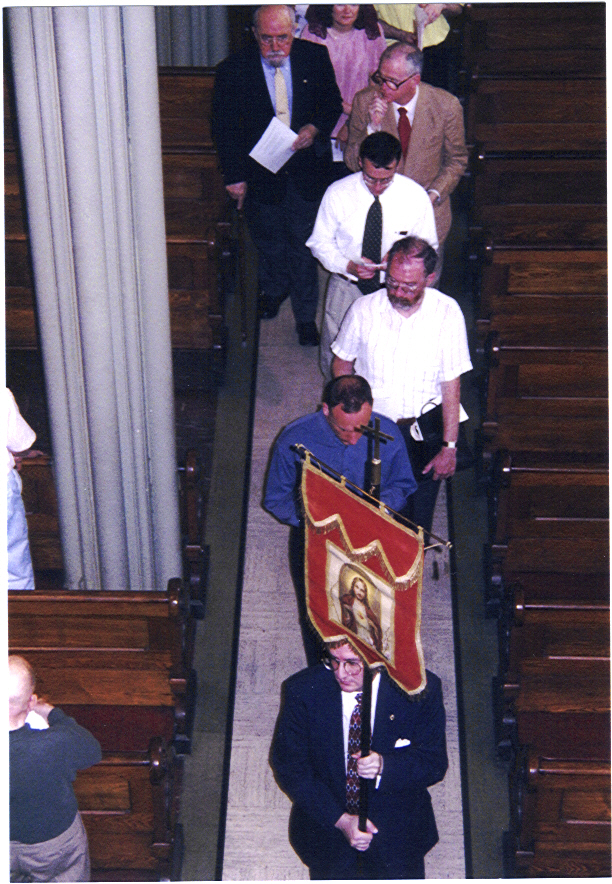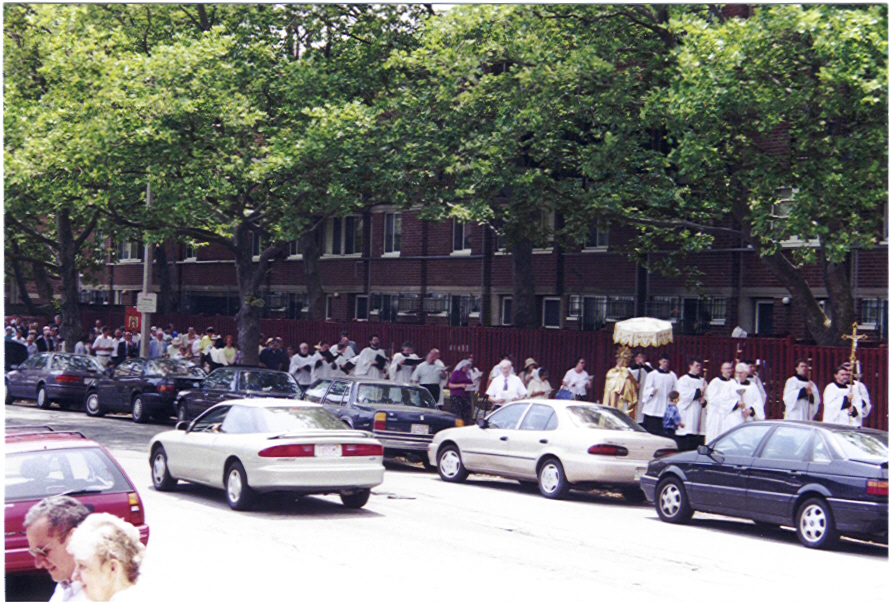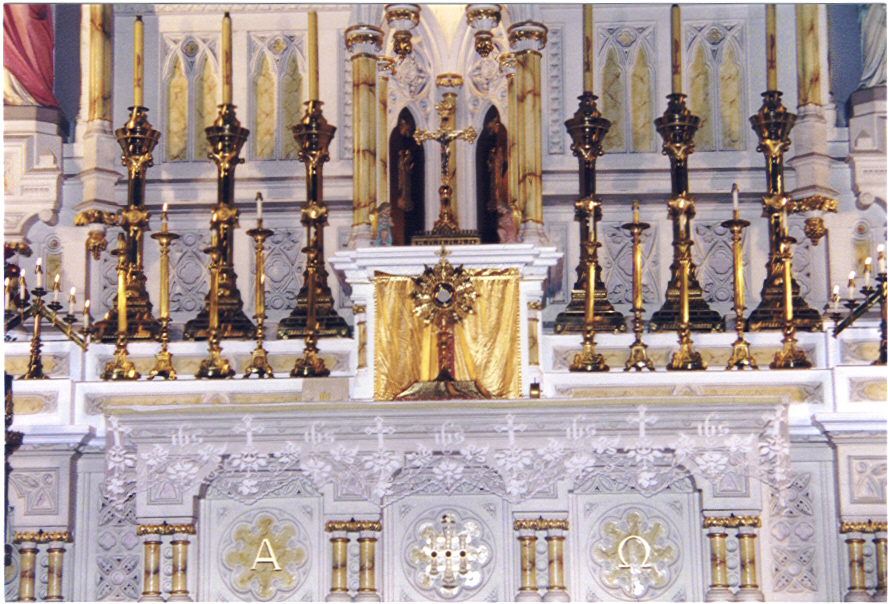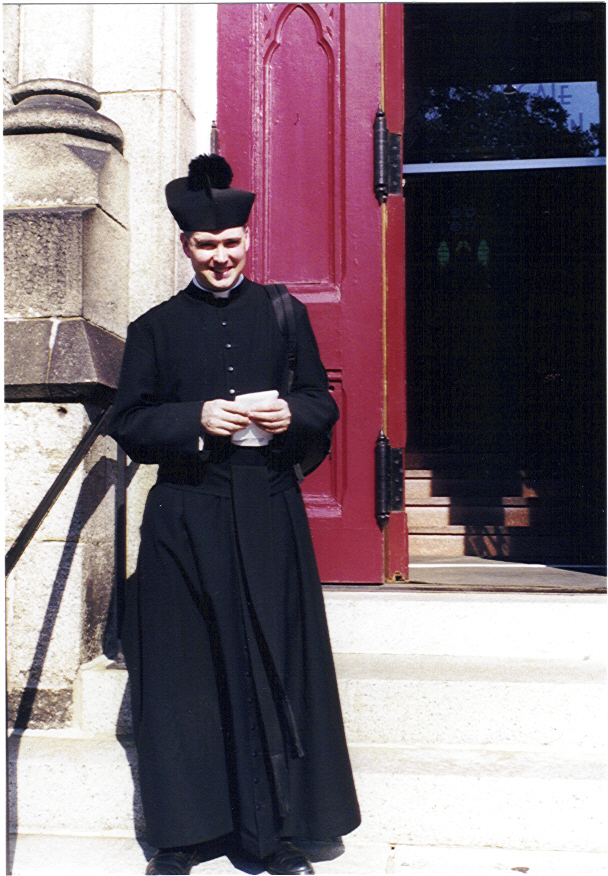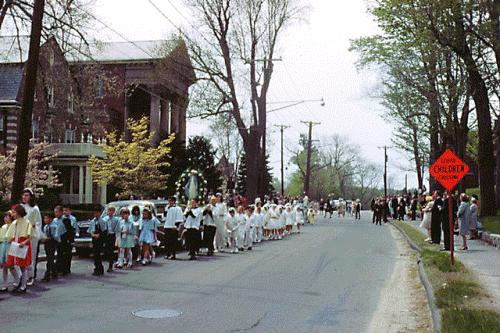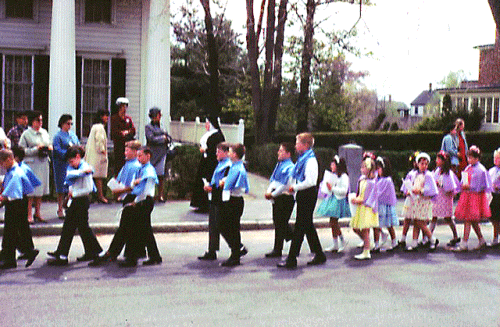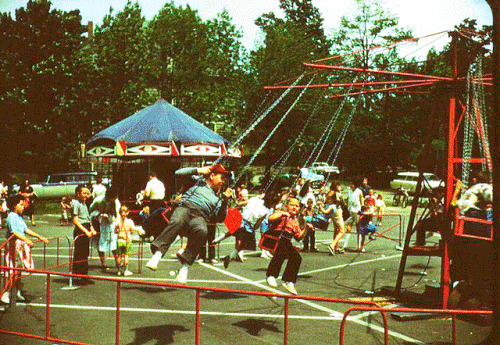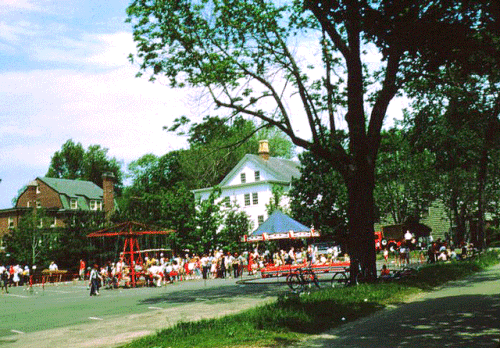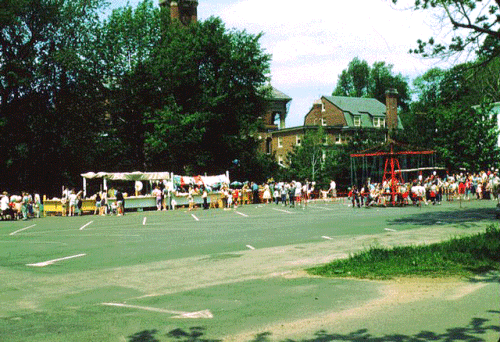The following article is extracted from The Makers of the Mold by Kenneth W. Newcomb. The section in question may be found here.
About 1843 or 1844 the first Catholic Mass celebrated in Newton was at Newton Upper Falls, conducted by Reverend Father Strain of Waltham.
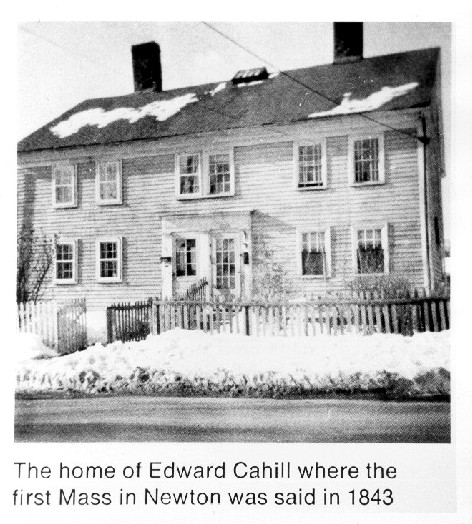
Others had come before him to attend the sick as well as render other services, but he appears to have been the first to hold religious services here. His chapel was a room in the mill house of Edward Cahill near the northwest corner of Chestnut and Elliot Streets. It was located on the property of Otis Pettee’s Elliot Mills, a fact verified by his granddaughter, the late Mrs. Grace Carey of Newtonville. Her father, James Cahill, was a prominent contractor and later one of the leaders in the church. Mrs. Carey leaves us with an amusing anecdote concerning her father:
“When he was sixteen years of age he worked as a water boy in the mills behind his home, carrying water from the well at the northerly end of the mill yard to the ‘bobbin’ girls in the factory. One hot and sultry day in August, 1862 he was drawing water from the well when he heard a fife playing the lilting tune of ‘The Girl I Left Behind Me.’ Rumbling down Chestnut Street was a horse-drawn dray with ‘old’ Flagg in the driver’s seat trying to sign up recruits for the Civil War. With out a moment’s hesitation Jimmie Cahill threw his bucket into the weeds and went off to war. He was to go through many battles unscathed, re-enlisting in January 1864 and finally being mustered out on June 29, 1865. His father had died in 1863 so when he came home he went to live with a tentmate of the war on the Needham side of Upper Falls.
The bodies of Edward Cahill and his wife, Margot, were moved from the cemetery at Piety Corners, Waltham to St. Mary’s Cemetery in Needham in April, 1877.”
Father Strain was succeeded by Father Patrick Flood who also held services in the same room as his predecessor. However, by 1860 the congregation had grown to about 300 and was meeting in Elliot Hall, the former Universalist Church on High Street. Prominent among the leaders of the congregation were James Cahill, Patrick Hurley, Michael Begley and Michael Daley. In 1867, with church funds amounting to about $7,000 and $3,000 raised by mortgage, a church, 40 X 76 feet in size, was built on an acre of land on Chestnut Street which had been purchased during the pastorate of Father Bernard Flood. It was the first Catholic church in Newton and was dedicated November 17, 1867.
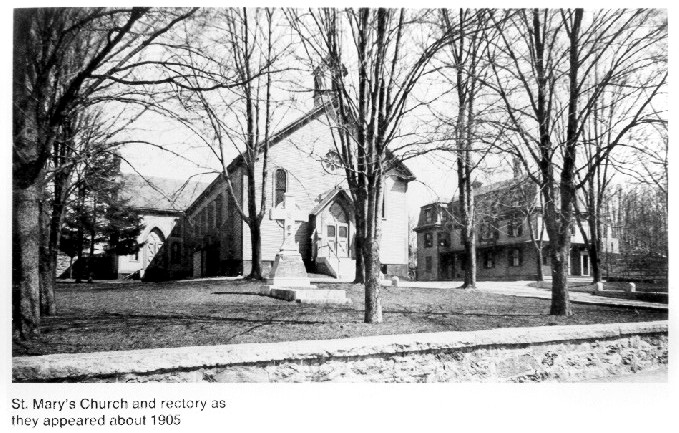
In 1875 a transept, 40 X 80 feet, having a gallery at each end was added to the church, increasing the seating capacity to 1,000. A basement was also extended under the whole church. The average attendance of the church at that time was about 750 and the parish, embracing Needham, Upper and Lower Falls and Newton Centre as far as Beacon Street included about 1,000 to 1,200 Catholics.
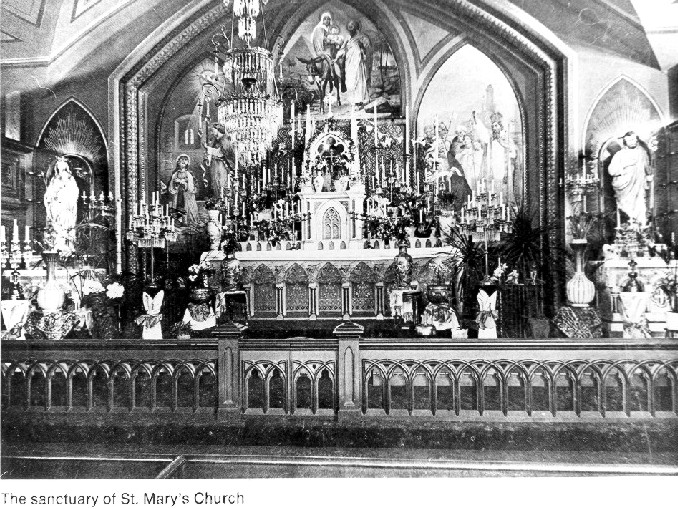
During this time land was purchased on Hale Street for possible use as a site for a convent and school, a plan later abandoned and the land sold. Also acquired by the church was a pasture on Chestnut where a carriage shed and barn for a cow and horses was built. In 1872, about 30 acres of land, bounded by Wellesley Avenue, Cedar and Hunnewell Streets, and located in the towns of Needham and Wellesley were purchased to become what is now known as St. Mary’s Cemetery.
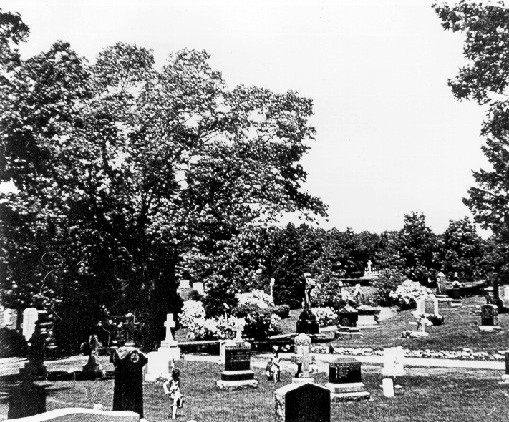
After the turn of the century the property on Chestnut Street was sold and the present site on Elliot Street, then occupied by the home of Dr. McOwen, was purchased. The house was moved further down Elliot Street and the corner stone of the new church, to be known as Mary Immaculate of Lourdes, was laid October 3, 1909. The cost of the building was $150,000.
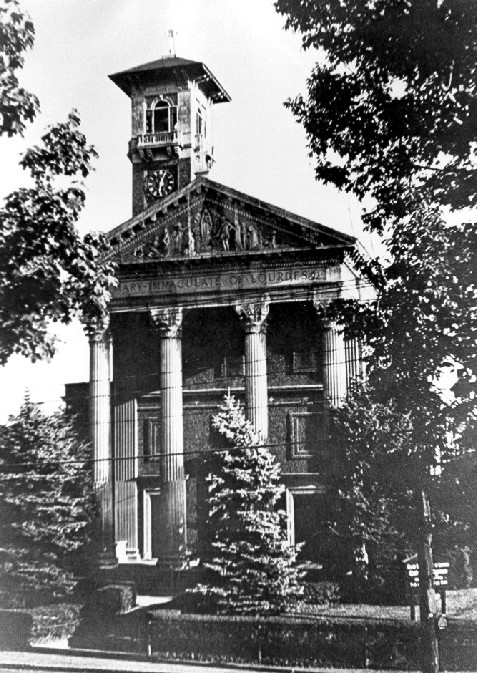
The new rectory beside the church was built about 1940, and the Dr. McOwen house adjacent to it was made into a parish center. Later it was remodeled and named the St. Elizabeth Center. St. Joseph’s Church in Needham, St. John’s the Evangelist in Wellesley Lower Falls, Sacred Heart in Newton Centre and St. Philip Neri Church in Waban all sprang from Mary Immaculate of Lourdes, and these newer parishes have greatly reduced the once wide scope of the mother church.
The contents of this article extract are Copyright 1997, 1998 Kenneth W. Newcomb and The Friends of Hemlock Gorge. All rights reserved.
